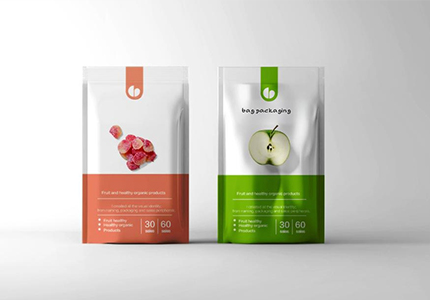In recent years, the global food industry has seen a significant shift in packaging solutions—with stand-up pouch packing machines emerging as a top choice for manufacturers ranging from small-scale artisanal brands to large multinational corporations. This transition is not accidental: it addresses critical pain points in food packaging, from shelf life concerns to sustainability goals, while aligning with evolving consumer preferences. Below, we break down the key drivers behind this industry-wide shift.
For food manufacturers, preserving product quality and extending shelf life is non-negotiable—especially for perishables like snacks, baked goods, frozen foods, and even pet food. Traditional packaging (such as rigid cans or flat pouches) often struggles with airtight sealing, leading to oxidation, moisture ingress, or contamination.
Stand-up pouch packing machines solve this by integrating advanced sealing technologies, including heat-seal and vacuum-seal capabilities. Many models also support modified atmosphere packaging (MAP), which injects a precise mix of gases (e.g., nitrogen, carbon dioxide) to slow spoilage. A 2024 study by the International Food Packaging Association (IFPA) found that food products packaged in stand-up pouches via automated machines had a 30–50% longer shelf life compared to those in traditional packaging. For brands, this translates to less waste, lower recall risks, and greater flexibility in distribution (e.g., reaching global markets without quality degradation).


Cost control remains a top priority for food businesses, and stand-up pouch packing machines deliver savings across the supply chain:
Labor savings: Unlike manual packaging or semi-automated systems, modern stand-up pouch machines operate at high speeds (up to 200 pouches per minute for industrial models) with minimal human intervention. This reduces labor costs by 25–40%, according to data from packaging technology firm PMMI.
Logistics savings: Stand-up pouches are lightweight and collapsible when empty, reducing shipping and storage costs. A snack manufacturer in Europe reported a 18% drop in transportation expenses after switching to stand-up pouches, as more units fit into each shipment.
Material savings: Stand-up pouches use 50–70% less material than rigid containers (e.g., glass jars or tin cans) while maintaining durability. This not only lowers raw material costs but also aligns with sustainability targets (see Section 3).
As governments tighten environmental regulations (e.g., the EU’s Packaging and Packaging Waste Directive, California’s Single-Use Plastics Ban) and consumers prioritize “green” brands, food manufacturers are under pressure to adopt sustainable packaging. Stand-up pouch packing machines enable this in two key ways:
First, the pouches themselves are increasingly made from recyclable or compostable materials (e.g., polyethylene terephthalate (PET) or plant-based films). Second, the machines’ precision reduces material waste during production—many models feature error-detection systems that minimize misaligned seals or damaged pouches, cutting scrap rates by up to 15%.
A 2023 survey by Nielsen found that 68% of U.S. food shoppers are more likely to buy products in recyclable stand-up pouches than non-recyclable alternatives. For brands, this shift isn’t just about compliance—it’s a competitive advantage.
Today’s consumers demand packaging that is convenient, reusable, and visually appealing—all areas where stand-up pouches excel. Stand-up pouch packing machines can be customized to produce pouches with features like:
Additionally, stand-up pouches have a larger surface area for branding and labeling, allowing manufacturers to highlight key messages (e.g., “organic,” “gluten-free”) or eye-catching designs. This improves shelf presence: a study by the Food Marketing Institute (FMI) showed that stand-up pouches attract 2x more consumer attention than traditional flat pouches in retail settings.
Take “Sunny Crust Bakery,” a U.S.-based manufacturer of artisanal cookies and brownies. Before 2022, the bakery used flat paper bags, which led to stale products within 7 days and high shipping costs. After investing in a stand-up pouch packing machine with MAP technology, Sunny Crust:
Extended product shelf life to 30 days.
Reduced shipping costs by 22% (due to lighter packaging).
Saw a 35% increase in online sales, as customers could order in bulk without worrying about spoilage.
As the food industry evolves, stand-up pouch packing machines are becoming even more advanced. New models integrate IoT (Internet of Things) technology for real-time monitoring—allowing manufacturers to track production speeds, seal quality, and material usage remotely. Some machines also support “just-in-time” packaging, enabling small-batch runs for niche products (e.g., limited-edition snacks) without sacrificing efficiency.
For food manufacturers looking to stay competitive, reduce costs, and meet consumer and regulatory demands, stand-up pouch packing machines are no longer an option—they’re a necessity.
To learn more about selecting the right stand-up pouch packing machine for your food business, contact [elemotion] (a leading provider of food packaging equipment) or download our free guide: “5 Questions to Ask Before Investing in a Stand-Up Pouch Machine.”

GET A QUOTE